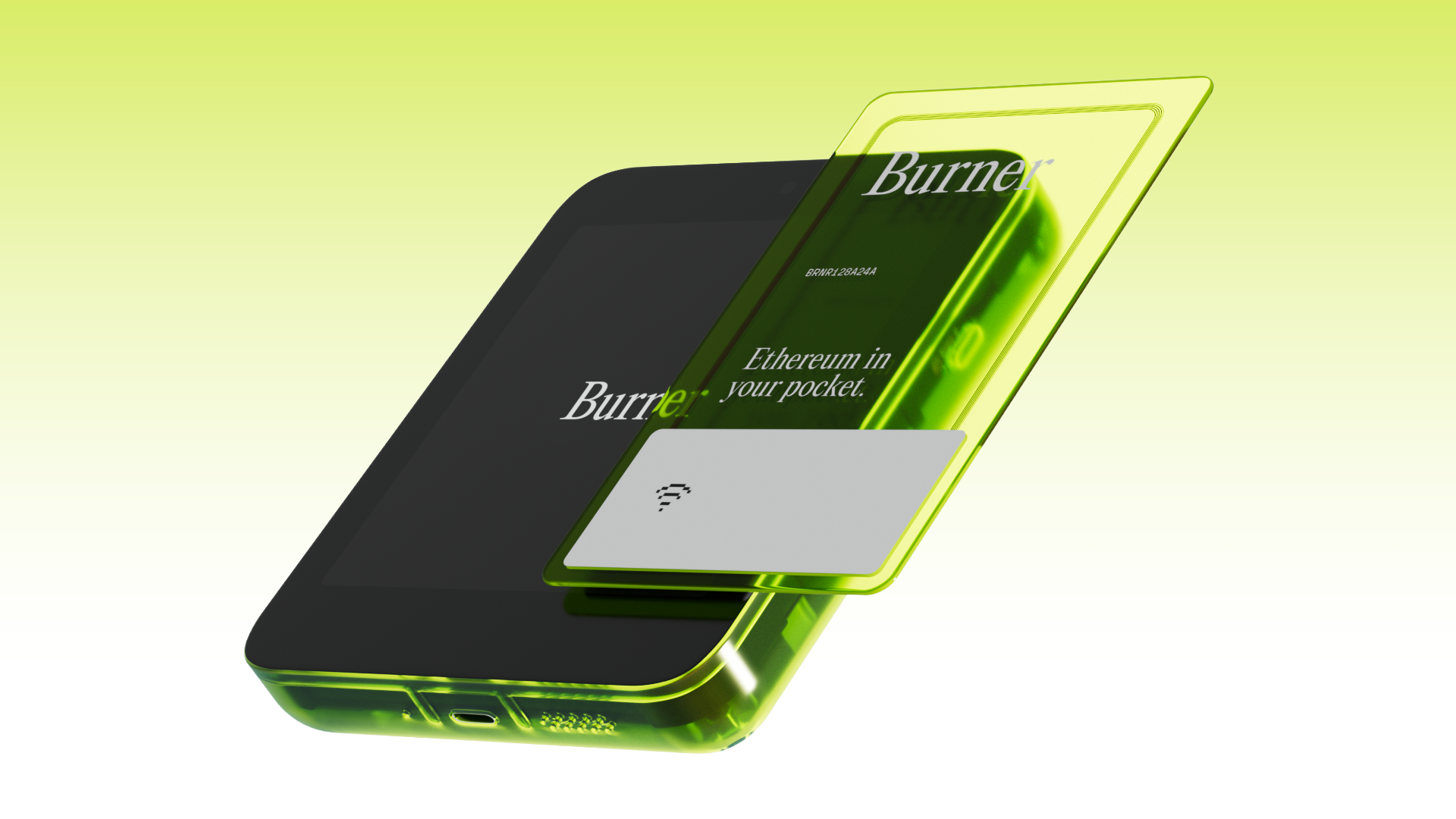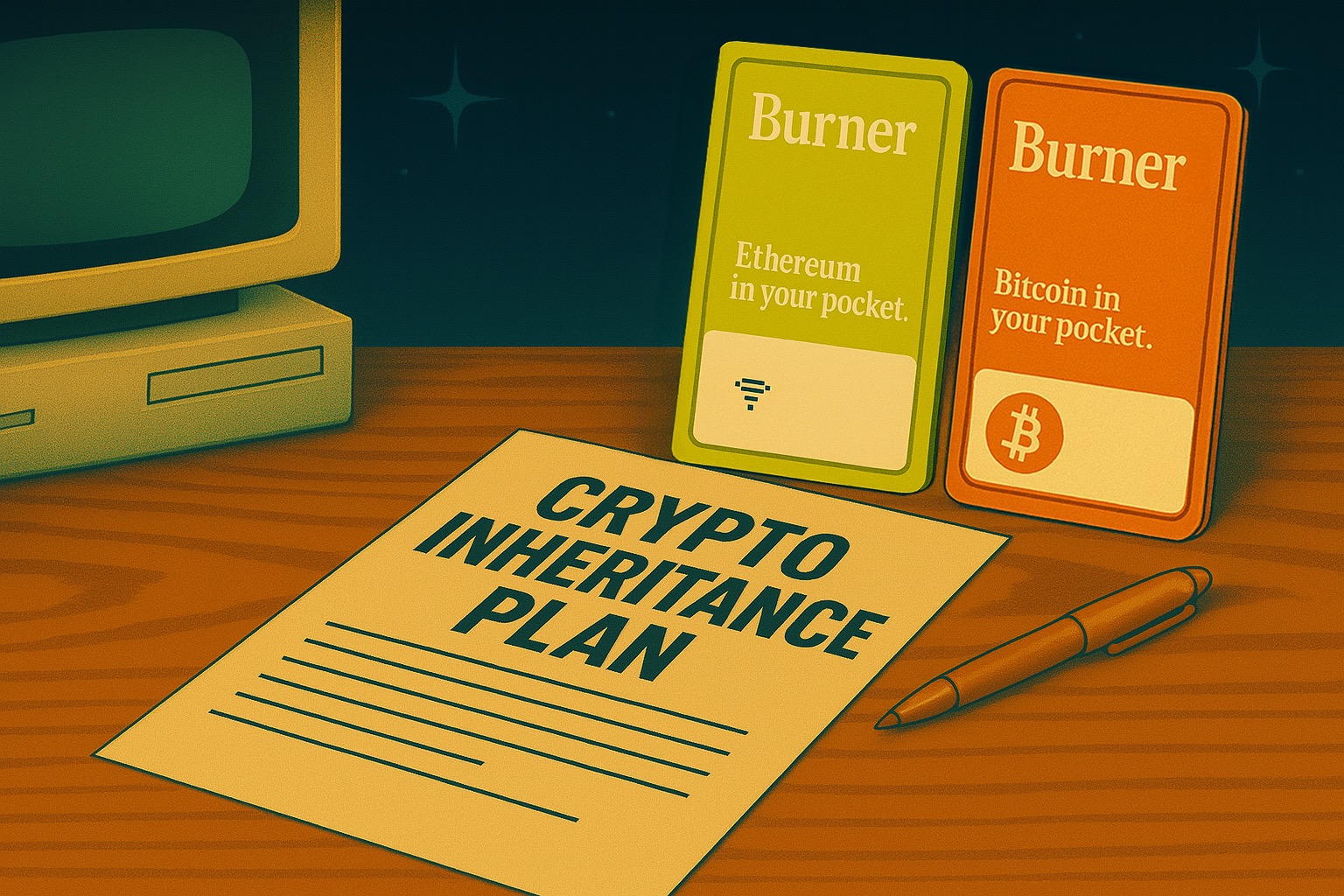Crypto Wallet Security: Mt. Gox, MetaMask, and More
Back to articles
Blockchain has seen its share of hard lessons. Within the last decade, more than $10 billion was lost to hacks, with centralized services and wallets being popular targets. These breaches not only exposed glaring vulnerabilities, but also forced the industry to confront the critical need for better security solutions.

At Burner, we’ve taken these lessons to heart. By addressing the weaknesses of traditional wallets, we’ve built an affordable hardware wallet that prioritizes security and simplicity—designed for real-life use to safeguard your digital assets without adding unnecessary complexity or cost.
To understand why this matters, it’s worth exploring the failures that pushed crypto security to evolve.
The Mt. Gox Hack
Before hardware wallets became popular, many crypto users relied on centralized platforms to store their crypto assets. In 2014, Mt. Gox—then the largest Bitcoin exchange—collapsed after hackers stole 850,000 BTC, worth hundreds of millions at the time.
This breach revealed the significant risks of centralized storage. Users had no control over their private keys, meaning they couldn’t secure their assets independently. Worse, the reliance on a single point of failure made Mt. Gox a prime target. The fallout left thousands empty-handed, underscoring the need for decentralization and self-custody. A decade later, Mt. Gox’s repayment efforts continue, with recent updates showing progress for affected users as the exchange works to distribute recovered assets, though another delay has been announced to manage the repayment process.

What We Learned:
The Mt. Gox disaster taught us a harsh lesson: ‘Not your keys, not your crypto.’ Entrusting private keys to centralized services puts users at risk of theft and mismanagement. This incident sparked a shift toward non custodial wallets—hot wallets (typically software-based) and cold wallets (typically hardware-based)—empowering users to take control of their own assets.How We Applied It To Burner Wallet:
Burner puts you in complete control of your crypto. With the same secure element chips used in other more expensive hardware wallets, your assets stay safe without relying on centralized platforms or services.The “Unhackable” Bitfi Wallet
In 2018, the Bitfi wallet entered the scene with a bold claim: it was “unhackable.” Backed by John McAfee and plenty of hype, Bitfi captured the crypto community’s attention—until security researchers proved otherwise.

Researchers discovered serious vulnerabilities, including ways to intercept sensitive data. Despite early denials, Bitfi eventually walked back its “unhackable” promise. The incident became a cautionary tale about overpromising security and underdelivering on transparency.
What We Learned:
The Bitfi saga showed the dangers of marketing hype in crypto security. Claims of invulnerability don’t inspire trust—transparency and collaboration do. Open-source development, where the community can inspect and improve the code, is a proven way to strengthen security and build confidence.How We Applied It To Burner Wallet:
BurnerOS is open-source by design, inviting community scrutiny and collaboration. This ensures that security isn’t just promised—it’s verifiable and built on trust.Ledger’s Data Breach and Phishing Scams
In 2020, Ledger faced a massive data breach that exposed the personal information of thousands of users. While the wallets themselves weren’t compromised, hackers used the stolen data to launch phishing campaigns.
Scammers sent convincing emails and texts mimicking Ledger’s branding, tricking users into entering their recovery phrases on fake websites. Many victims lost their crypto, underscoring the dangers of phishing attacks and the inherent risks tied to recovery phrases.

What We Learned:
This breach highlighted two key issues: the importance of protecting personal data and digital assets, as well as the growing risk of online threats tied to recovery phrases. Even the most secure wallet can be undermined if users are tricked into revealing their keys.How We Applied It To Burner Wallet:
Burner eliminates recovery phrases, also called seed phrases or recovery seeds, and uses intuitive PIN code access alongside non-extractable private keys to reduce the risk of phishing attacks. With no sensitive phrases to steal, Burner provides peace of mind, allowing you to focus on using crypto—not worrying about scams.MetaMask and Phantom Browser Vulnerability
In 2022, a critical security vulnerability was identified in widely-used browser extension wallets MetaMask and Phantom. This flaw allowed attackers to exploit weaknesses in how these extensions stored recovery seed phrases locally. Specifically, hackers could extract seed phrases directly from computer disks, leaving user assets vulnerable to theft if their devices were compromised.

Although both MetaMask and Phantom quickly issued patches to resolve the issue, the incident highlighted broader vulnerabilities inherent in software wallets that depend on local or cloud-based storage of sensitive data. Users learned that even trusted wallets operating as browser extensions could unintentionally expose private information, emphasizing the ongoing risks of relying solely on software-based wallet solutions.
What We Learned:
Similar to Ledger’s data breach, this vulnerability underscored the dangers tied to recovery seed phrases. However, unlike phishing attacks that exploit user trust, this scenario highlighted the inherent risks in digitally storing sensitive information, showing that even reputable software wallets can unintentionally expose private data through hidden vulnerabilities.How We Applied It To Burner Wallet:
Burner takes a hardware-first approach, securely generating and storing non-extractable private keys directly on tamper-resistant hardware. Without relying on digitally accessible or locally stored recovery phrases, Burner safeguards your crypto against vulnerabilities inherent in software wallets.Tangem Extractable Key Incident
Tangem wallets faced scrutiny due to a software flaw in their app that resulted in private keys being stored in plain text within user logs. These logs, accessible during support interactions, created a potential vulnerability by exposing sensitive keys to unauthorized access.

This incident highlighted a critical vulnerability: private keys, the cornerstone of wallet security, were not adequately safeguarded against extraction. For hardware wallet users, it served as a stark reminder that even minor software oversights can result in major security breaches.
What We Learned:
Hardware wallets are only as secure as the measures in place to prevent private key extraction. Without robust safeguards, vulnerabilities in supporting software can undermine even the most secure hardware.How We Applied It To Burner Wallet:
Burner’s private keys are non-extractable by design, generated and stored directly on tamper-resistant hardware. This ensures private keys cannot be exposed through logs, software flaws, or user interactions—keeping your crypto assets secure at all times.Trezor’s Firmware Vulnerability
The Trezor Safe 3 was found to be susceptible to physical supply chain attacks, where attackers could tamper with the device’s microcontroller to modify its software and potentially access users’ funds remotely. Although Trezor addressed the vulnerabilities, the incident underscored a recurring challenge: firmware and hardware designs are both a necessity and a potential risk to security.
Updating firmware can fix bugs and enhance features, but it also opens the door to potential threats, including supply chain attacks, if the device’s components—such as the microcontroller—are not fully secured against physical tampering.

What We Learned:
Firmware updates can be a double-edged sword. While they’re critical for addressing flaws, they also create opportunities for exploitation, especially if attackers gain physical possession of the device. This incident reinforced the need for hardware wallets to minimize reliance on frequent updates without compromising security.How We Applied It To Burner Wallet:
Burner has fixed firmware adding an additional layer of security. Without the need for frequent updates, your wallet remains secure against both physical access tampering and online exploits.Turning Lessons Into Solutions
The challenges faced by hardware wallets like Ledger and Trezor—and even centralized platforms like Mt. Gox and software wallets like MetaMask and Phantom—have taught us valuable lessons about what a hardware wallet should be. Burner takes these lessons to heart, solving the biggest issues with security, usability, and practicality.
What We’ve Learned (and How Burner Wallet Fixes It):
-
Self-Custody Without Complications:
The Mt. Gox hack revealed the dangers of centralized storage. Burner gives you complete control of your crypto, protected by secure chip technology.
-
Transparency Builds Trust:
The Bitfi fiasco taught us the importance of open-source development. BurnerOS and libHaLo fosters community collaboration, making security verifiable.
-
No Recovery Phrases, No Seed Phishing:
Ledger’s data breach highlighted the risks of recovery phrases. Burner removes them entirely, using intuitive PIN code access.
-
Hardware-Based Security, No Software Extraction:
The MetaMask and Phantom vulnerability revealed risks of seed phrases stored in software. Burner protects your crypto by securely generating non-extractable private keys on tamper-resistant hardware.
-
Non-Extractable Key Security:
The Tangem incident highlighted risks when private keys aren’t safeguarded. Burner ensures your keys are non-extractable and securely stored.
-
Fixed Firmware, Limit Vulnerabilities:
Trezor’s firmware vulnerability showed the risks of modifiable firmware. Burner uses fixed firmware and non-extractable keys.
Final Thoughts
Burner isn’t just another hardware wallet—it’s built to make managing crypto assets simple, secure, and stress-free. Whether you’re using decentralized finance (DeFi) applications, collecting NFTs, gifting crypto, or safeguarding your holdings, Burner makes it easy.
Curious how Burner simplifies crypto gifting?
Check out our full guide on the easiest and most secure ways to gift crypto.
Simplify your crypto security today.
FAQ: Crypto Wallet Security
❓ What is the most secure way to store cryptocurrency?
The most secure way to store crypto is by using a hardware wallet with non-extractable private keys—like Burner wallet. This keeps your assets offline (“cold storage”), out of reach from hackers and malware.
❓ What’s the difference between a hardware wallet and a software wallet?
A hardware wallet stores your private key completely offline, offering strong protection against hacks. Software wallets (sometimes called “hot wallets”) run on internet-connected devices and are more vulnerable. Burner wallet uses a secure chip and never exposes your private key to the internet.
❓ What are recovery phrases (seed phrases), and are they risky?
A recovery phrase (or seed phrase) is a backup of your wallet’s private key. If anyone else gets it, they can access your funds. Many hardware wallets—including Burner wallet—eliminate the need for recovery phrases entirely, using PIN-based security for safer, simpler access.
❓ What happened in the Mt. Gox hack, and how do I avoid similar risks?
Mt. Gox failed because it was a centralized exchange that controlled everyone’s private keys. The lesson: use a non-custodial hardware wallet, like Burner, so only you control your assets and not a third party.
❓ How can I avoid phishing scams with crypto wallets?
Never enter your recovery phrase or PIN on suspicious sites or links. Burner wallet removes the risk of phishing for seed phrases by not using them at all—so there’s nothing to steal.
❓ What does ‘offline storage’ mean for crypto wallets?
Offline storage (cold storage) means your private key is never exposed to the internet. Burner wallet keeps your key locked inside tamper-resistant hardware, protecting your crypto from online threats.

Get your Burner
What to read next
Back to articlesHow to Bridge Ethereum to Base: The Complete Guide (2025)
Bridging ETH to Base is the fastest way to access low-cost, high-speed Ethereum transactions. This guide explains how blockchain bridges work, what to consider when choosing one, and how to bridge securely using your Burner wallet. Learn how to minimize gas fees, avoid common pitfalls, and start exploring dApps on Base in minutes.
Burner Terminal: Tap to Pay for Stablecoins
Burner Terminal is the first point-of-sale built for native tap to pay stablecoin payments. Designed for small businesses everywhere, it makes accepting crypto as easy as tapping a card or scanning a QR code. Simple, fast, and secure, Burner Terminal brings the benefits of cash to digital payments without chargebacks, high fees, or complexity.
Don’t Let Your Crypto Die With You: Burner Makes Inheritance Simple
Crypto inheritance has often been overlooked. It’s complicated to plan, easy to lose, and impossible to recover without the right keys. Burner makes it simple. Designed for real-world handoff, Burner replaces fragile recovery phrases with a secure PIN and a physical device you can safely store, back up, and pass on. This guide explains why traditional wallets fall short, how Burner solves the inheritance problem, and what steps you can take today to ensure your digital assets aren’t lost tomorrow.


